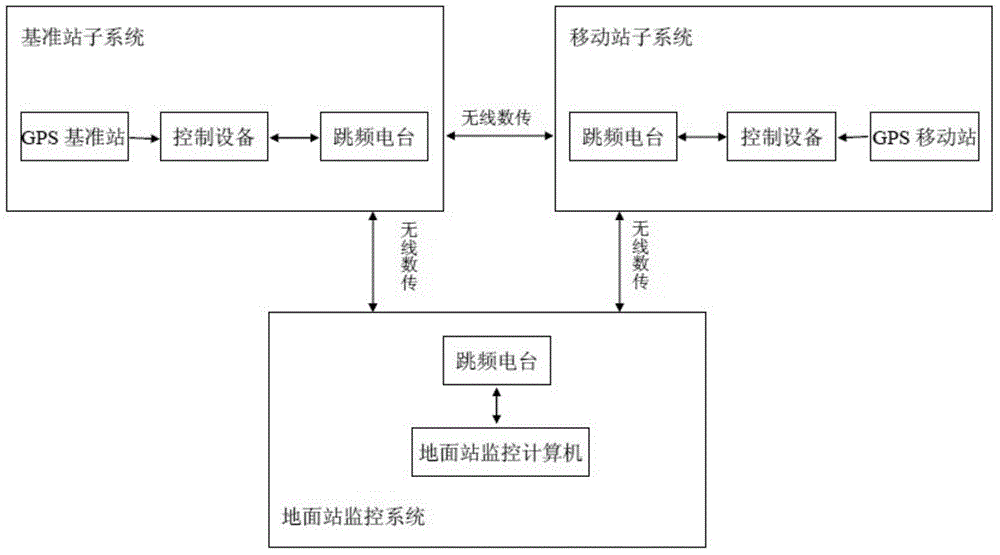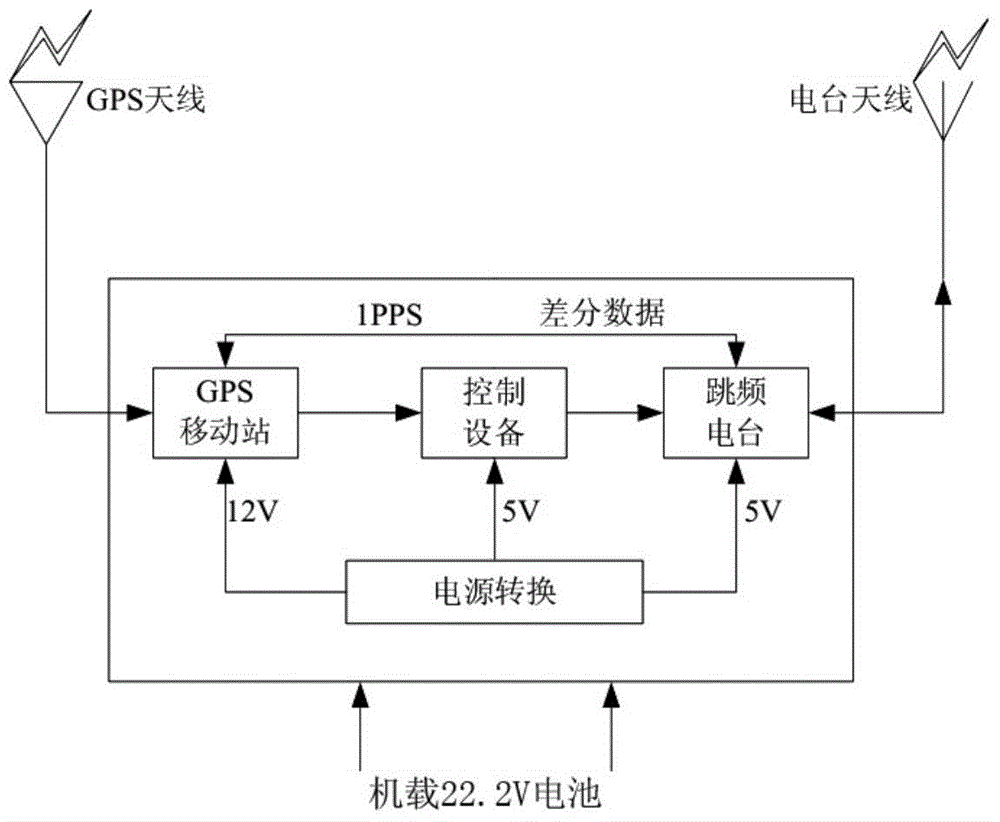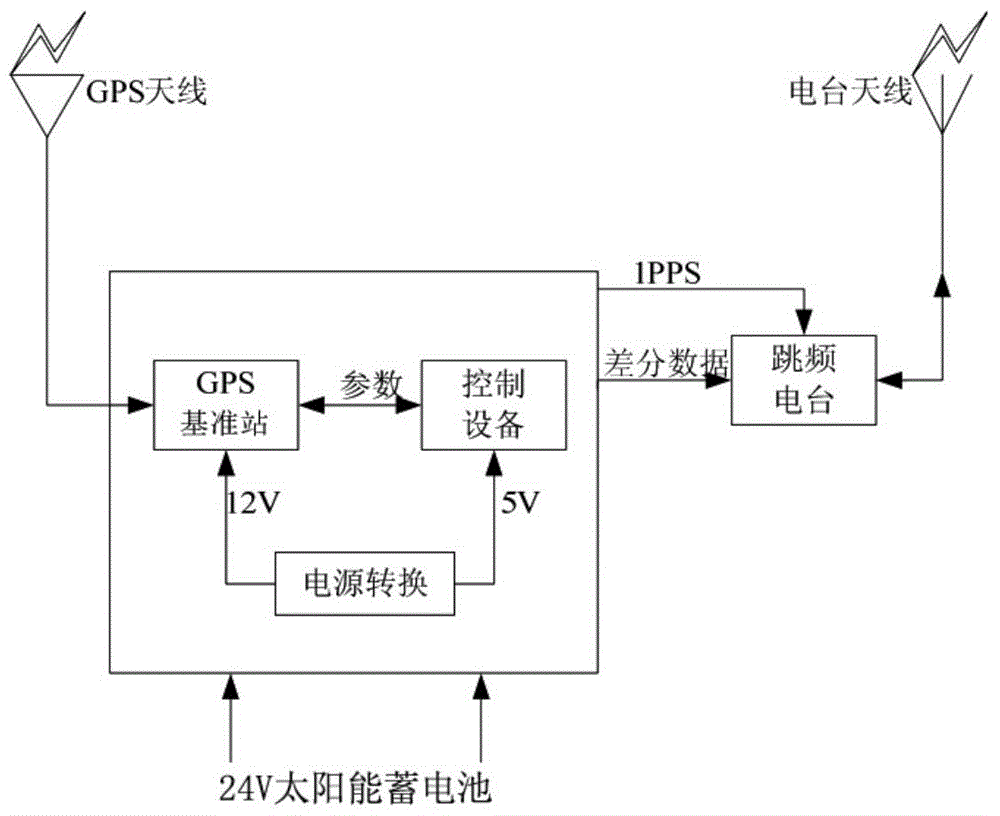Power line patrol unmanned aerial vehicle navigation system based on GPS RTK technology
A technology of navigation system and power line patrol, applied in radio wave measurement system, satellite radio beacon positioning system, overhead line/cable equipment and other directions, can solve the problem of positioning accuracy error, and achieve the effect of improving accuracy
- Summary
- Abstract
- Description
- Claims
- Application Information
AI Technical Summary
Problems solved by technology
Method used
Image
Examples
Embodiment Construction
[0020] A GPS RTK technology-based power line patrol UAV navigation system provided by the present invention will be described in detail below in conjunction with the accompanying drawings and specific embodiments.
[0021] In the following description, various aspects of the present invention will be described. However, those skilled in the art can implement the present invention by using only some or all of the structures or processes of the present invention. For clarity of explanation, specific numbers, arrangements and sequences are set forth, but it will be apparent that the invention may be practiced without these specific details. In other instances, well-known features have not been described in detail in order not to obscure the invention.
[0022] With the rapid development of satellite positioning technology, people's demand for fast and high-precision location information is also increasing. At present, the most widely used high-precision positioning technology is...
PUM
 Login to View More
Login to View More Abstract
Description
Claims
Application Information
 Login to View More
Login to View More - R&D
- Intellectual Property
- Life Sciences
- Materials
- Tech Scout
- Unparalleled Data Quality
- Higher Quality Content
- 60% Fewer Hallucinations
Browse by: Latest US Patents, China's latest patents, Technical Efficacy Thesaurus, Application Domain, Technology Topic, Popular Technical Reports.
© 2025 PatSnap. All rights reserved.Legal|Privacy policy|Modern Slavery Act Transparency Statement|Sitemap|About US| Contact US: help@patsnap.com



